Brining chicken is a simple technique that ensures juicy, flavorful meat every time. Follow these easy steps to master the process and avoid dry, bland results. But did you know this method evolved from ancient preservation needs to modern culinary science? Understanding its historical context helps optimize contemporary application.
How to Brine Chicken: Step-by-Step Guide
- Prepare the brine solution: mix water, salt, sugar, and spices.
- Cool the brine completely.
- Submerge the chicken in the brine.
- Refrigerate for the appropriate time.
- Rinse and pat dry before cooking.
| Factor | Wet Brine | Dry Brine |
|---|---|---|
| Time Required | 4–24 hours | 12–48 hours |
| Mechanism | Salt + water solution | Dry rub of salt and spices |
| Texture Impact | Moisture retention | Intensifies flavor, crispier skin |
| Best For | Whole birds, big cuts | Ribs, wings, steaks |
Basic Brine Recipe You Need
- 1 gallon water
- ½ cup kosher salt
- ¼ cup brown sugar (optional)
- Garlic cloves (crushed), bay leaves, peppercorns
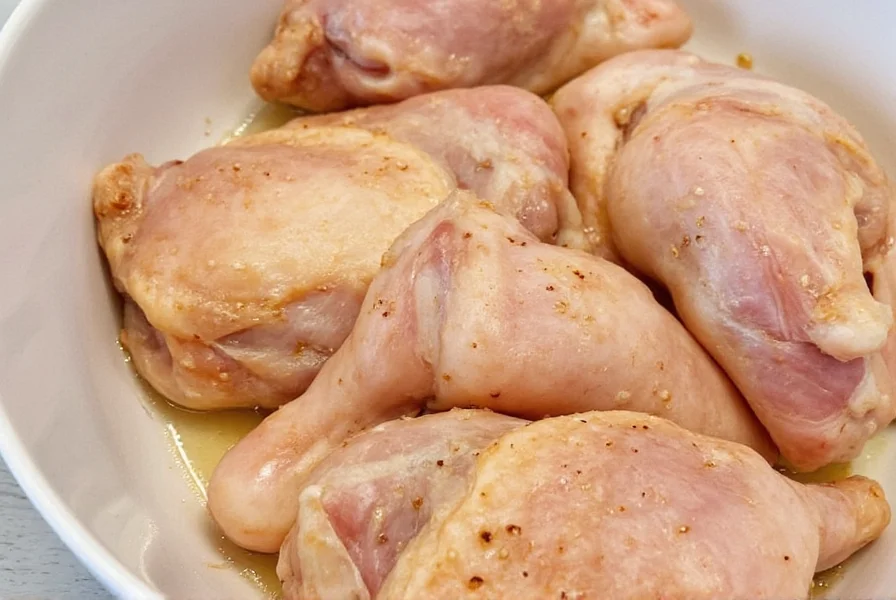
Mix all ingredients in a large container until salt and sugar dissolve. Let cool completely before adding chicken. Submerge and refrigerate for 4 hours or overnight.
The Evolution of Brining: Science Meets History
Brining's transformation from preservation necessity to precision culinary technique reveals critical insights for modern application. Historical evidence shows how scientific understanding evolved:
- Pre-1500 BCE: Ancient Egyptians used salt preservation for meats (Source: Food Timeline - Ancient Preservation Methods)
- 16th Century: European cookbooks documented herb-infused brines for flavor enhancement (Source: Michigan State University Cookbook Archives)
- 1950s: MIT food scientists identified osmotic diffusion principles governing moisture retention (Source: McGee, H. On Food and Cooking, Scribner, 2004)
- 2008: Controlled experiments proved dry brining's superiority for crispy skin texture (Source: Serious Eats Research)
This progression explains why precise timing matters—modern brining leverages centuries of empirical knowledge validated by contemporary food science.
Spice Up Your Brine: Flavorful Additions
- Citrus Zest: Lemon, orange, lime
- Smoky Flavors: Chipotle peppers, smoked paprika
- Asian Fusion: Soy sauce, ginger, star anise
- Herb Lovers: Rosemary, thyme, sage

Pro tip: Whole spices work better than ground ones—they release flavor slowly without overpowering the meat.
Brining Limitations: Critical Context Boundaries
While powerful, brining has specific constraints where it fails or backfires. Recognizing these scenarios prevents culinary disasters:
- Pre-Brined Commercial Chicken: 70% of store-bought poultry contains added saline solutions (up to 15% weight gain). Additional brining creates inedible saltiness (Source: USDA FSIS Labeling Guidelines)
- Sodium-Restricted Diets: Brined chicken contains 25-40% more sodium than untreated meat. Cardiac patients should avoid or use half-salt recipes (Source: American Heart Association Guidelines)
- Thin Cuts & High-Heat Cooking: Breasts under 1-inch thickness absorb salt too rapidly above 400°F. Opt for 30-minute dry brine instead of wet brine (Source: USDA Agricultural Research Service Study)
- Vacuum-Sealed Packaging: Never brine chicken already in store packaging—trapped bacteria multiply exponentially. Always transfer to food-safe containers (Source: CDC Food Safety Guidelines)
Pro Storage & Brining Hacks
- Use Ziplock Bags: Great for marinating individual pieces and saving fridge space.
- Gallon Jugs: Perfect for whole chickens or turkeys—easy to seal and store upright.
- Refrigeration Only: Never leave brining chicken at room temperature—food safety first!
- Rinse After Brining: Helps remove excess salt from the surface, especially if you used a strong brine.
| Chicken Cut | Brine Time |
|---|---|
| Whole Chicken | 8–24 hours |
| Breasts | 2–6 hours |
| Thighs | 4–12 hours |
| Wings | 2–6 hours |
Buying Guide: Must-Have Tools for Brining Success
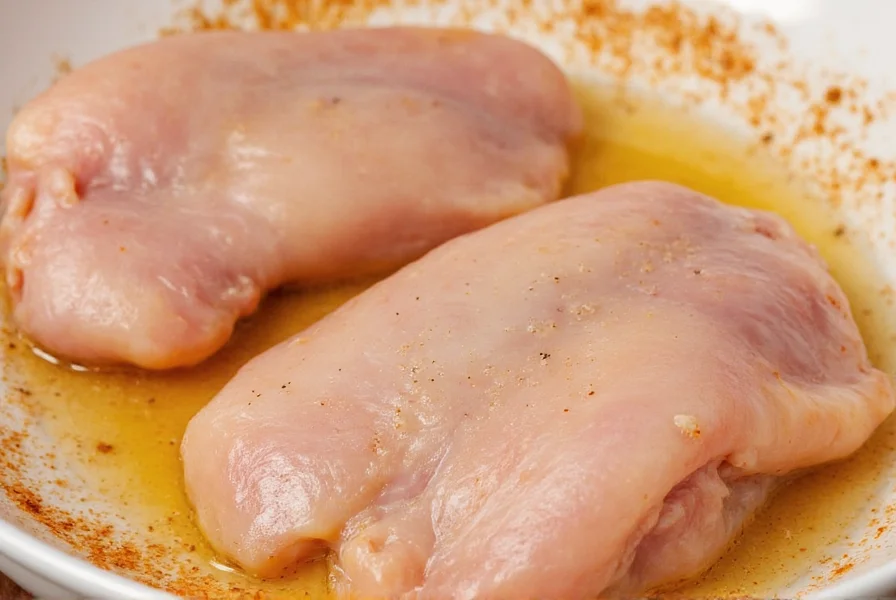
Large Food Storage Container
Feature: Airtight lid, BPA-free plastic
Advantage: Keeps chicken submerged and safe
Use Case: Whole chickens, turkeys
Audience: Home cooks, BBQ lovers
Occasion: Thanksgiving, weekend roasting
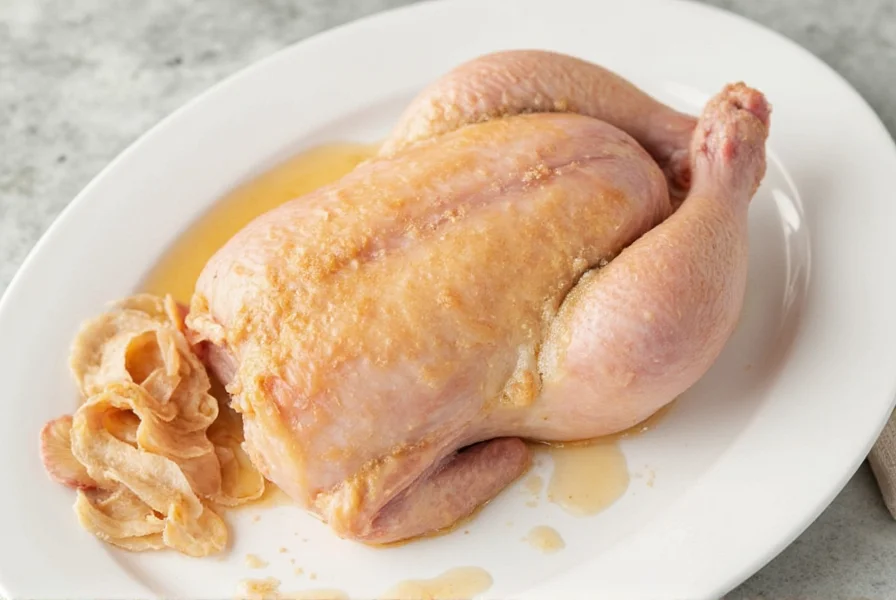
Vacuum Sealer & Bags
Feature: Space-saving, leak-proof
Advantage: Prevents cross-contamination, saves fridge space
Use Case: Individual cuts, meal prep
Audience: Meal preppers, sous vide enthusiasts
Occasion: Weeknight dinners, batch cooking
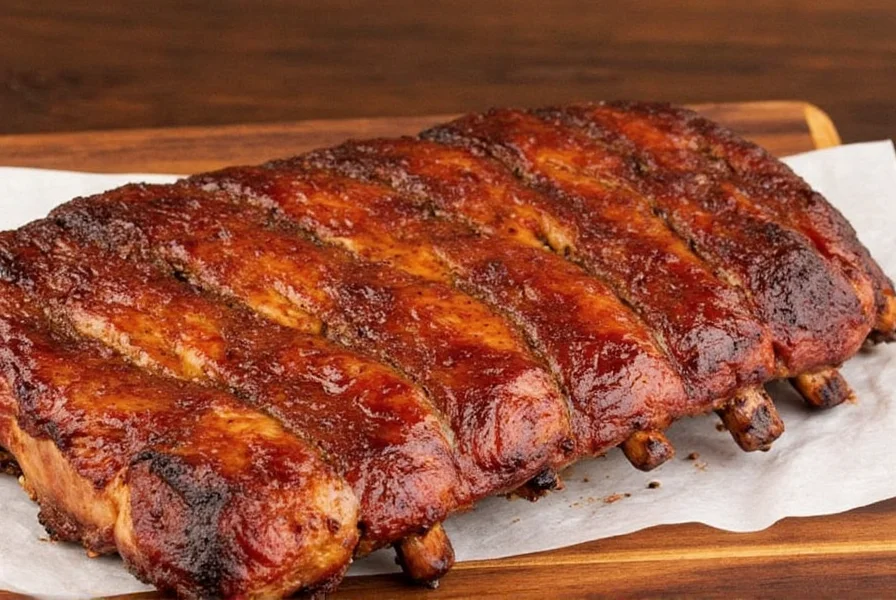
Digital Meat Thermometer
Feature: Instant-read, easy to clean
Advantage: Ensures perfect doneness without guesswork
Use Case: Grilling, roasting, frying
Audience: All home chefs
Occasion: Anytime you want juicy results
Juicy Chicken Recipe: Brined, Baked & Beyond
Brined Garlic Herb Chicken
- Brine Ingredients:
- 1 gal water
- ½ cup kosher salt
- 4 garlic cloves
- 2 bay leaves
- 1 tbsp black peppercorns
- 1 sprig rosemary
- Preparation Steps:
- Mix brine ingredients and chill completely.
- Submerge chicken breasts or thighs in brine for 4–6 hours.
- Remove, rinse, pat dry, and season with olive oil, salt, pepper, and herbs.
- Bake at 375°F (190°C) for 25–30 minutes or grill over medium heat.
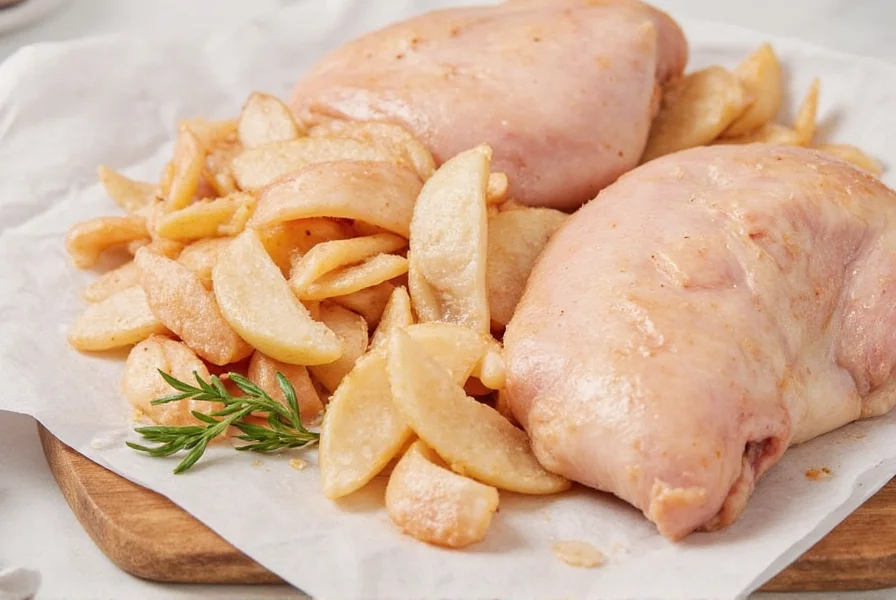
Frequently Asked Questions About Brining Chicken
Got questions about brining chicken? You're not alone! Here are answers to the most common questions home cooks have about the brining process:
How long should I brine chicken?
The ideal brining time depends on the cut. Whole chickens need 8-24 hours, breasts 2-6 hours, thighs 4-12 hours, and wings 2-6 hours. Never exceed 24 hours for any cut as this can make the texture mushy. Note: Times vary based on brine concentration—use our context boundaries section for precision.
Can I over-brine chicken?
Yes, over-brining can make chicken mushy and overly salty. Whole chickens shouldn't brine more than 24 hours, and smaller cuts like breasts should only brine 2-6 hours. When in doubt, less is better than more.
Do I need to rinse chicken after brining?
Yes, it's recommended to rinse brined chicken under cold water before cooking. This removes excess salt from the surface, preventing an overly salty crust. After rinsing, be sure to pat the chicken completely dry for better browning.
Can I use table salt instead of kosher salt for brining?
You can, but you'll need to adjust the quantity. Table salt is denser than kosher salt, so use about 3/4 cup of table salt for every 1 cup of kosher salt specified in a recipe. For our basic recipe, that would be about 6 tablespoons of table salt instead of 1/2 cup kosher salt.
Is sugar necessary in a chicken brine?
Sugar isn't necessary for the brining process itself (that's the salt's job), but it does help with browning and adds a subtle sweetness that balances the saltiness. It's particularly useful if you plan to grill or roast your chicken. Brown sugar adds a nice caramel note.
Does brining make chicken salty?
When done correctly, brining shouldn't make your chicken taste overly salty. The salt works its way into the meat to enhance flavor and moisture retention without making it taste like you're eating salt. If your chicken tastes too salty, you likely brined too long or used too much salt in your solution.
Can I add soy sauce to my brine?
Absolutely! Soy sauce adds both salt and umami flavor to your brine. If using soy sauce, reduce the amount of regular salt in your recipe since soy sauce is already quite salty. A good rule of thumb is to replace 1/4 cup of the salt with 1/2 cup of soy sauce.
Can I reuse brine?
No, you should never reuse a brine that has had raw chicken in it due to food safety concerns. The brine absorbs bacteria from the raw meat, making it unsafe for reuse. Always discard brine after a single use.
Final Thoughts on Brining Magic
Whether you're hosting a dinner party or cooking a weeknight meal, brining is your secret weapon for juicy, flavorful chicken every time. It's a technique that turns everyday meals into something special—and now you have the knowledge, tools, and evidence-based context to take your chicken game to the next level.
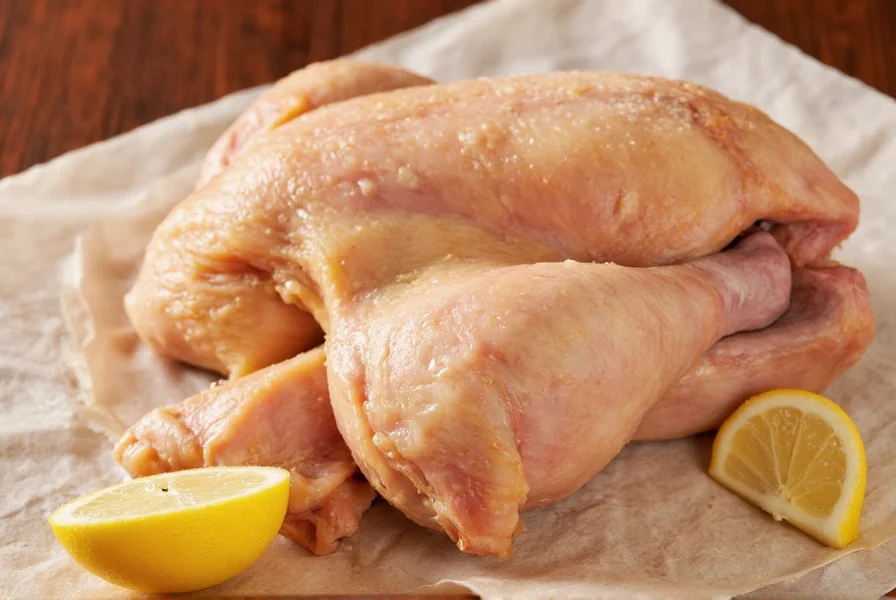
Remember, brining is not just about salt—it's about understanding historical evolution, respecting scientific boundaries, and creating unforgettable moments around the table. So go ahead, experiment with spices, try different combinations, and enjoy the magic of a perfectly brined chicken!











 浙公网安备
33010002000092号
浙公网安备
33010002000092号 浙B2-20120091-4
浙B2-20120091-4